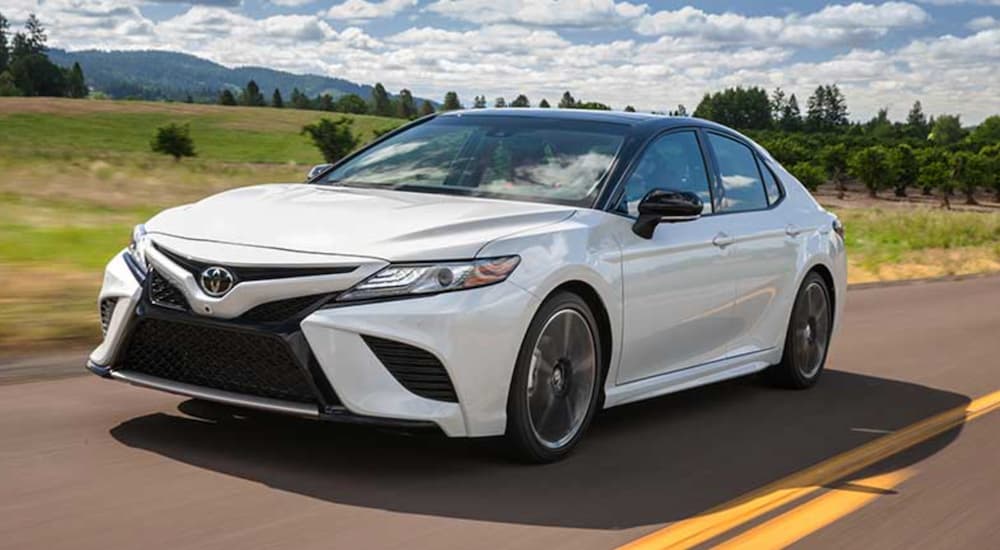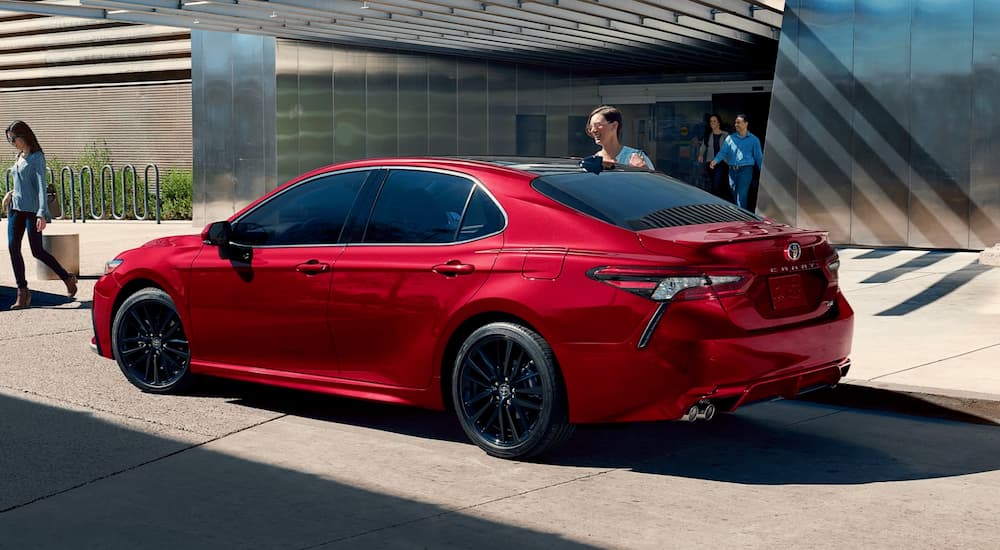There aren’t many models that have lasted for four decades without being pulled from the market, especially when it comes to the shrinking sedan segment. This makes the Toyota Camry a rare breed. It is one of the few sedan nameplates still on the market that continues to dominate the sales charts and shows no signs of going away any time soon, especially after selling more than 13 million units since its original release in America. There are lots of people still looking for a Toyota Camry for sale every single day, keeping it a best-seller for Toyota.
But how? How can a nameplate manage to stay so relevant for so long? Even more than that, how has the Camry managed to maintain such a presence in a segment that has been slowly phased out by many other top manufacturers? Well, it’s quite an interesting story, and a lot of it involves how Toyota has evolved the Camry when it comes to innovations, new design cues, and modern sensibilities, all wrapped up in an affordable package.
Not Just Another Sedan in the 1980s
In 1979 Toyota’s first iteration of the Toyota Camry went into production as the Celica Camry, a four-door compact sedan for the Japanese market based on the sporty two-door Celica. The Celica Camry was an instant success, and Toyota spun the Camry off as its own model in 1983. The new Camry switched from rear-wheel drive to front-wheel drive and was powered by an efficient four-cylinder engine, making it more practical than sporty, but that only made it more popular with car shoppers.
In some ways, the Camry may have been just another sedan, but it was also more than that. Toyota recognized that it had hit gold with the Camry, not just in the Japanese market but abroad as well. This resulted in Toyota considering the Camry a “World Car”––something anyone, anywhere, could drive. It had a simple design to appeal to anyone who needed something functional and economical. The Camry was easy enough to handle on the road, had great fuel economy, and has always been considered one of the most durable sedans made, even to this very day.
The Camry also––despite its unassuming looks––really began carving out its own niche in the market during the 1980s, when Toyota began focusing on manufacturing quality and design integrity above all else. While the first generations of the Camry may have looked like just another four-door sedan from Japan, they actually embodied a philosophy that Toyota had imbued into the design that would echo throughout the brand’s future and pay huge dividends to this day.
A Market Phenomenon in the 1990s
Moving away from the traditional four-cylinder, Toyota buffed up the Camry’s offerings in the 1990s with V6 engine options and introduced the first wide-body variants for the American market. This would start the process of moving the Camry away from being the traditional, narrow-body Japanese sedan that dominated the market during the previous decade. It would also open the door for bold stylistic changes to come down the pipeline.
Throughout the 1990s, the wide-body design paid off, and the Camry began moving closer to a luxury town-car design, with curvature along the rear pillars, a more stylish front fascia, and conservative lines that gave it a more upscale look. This was due in part to sharing a design language with the luxurious Lexus LS400 in a deliberate choice to help leverage Lexus as a brand and add more luxury appeal to the Camry outside of Japan.
The decision to make the Camry more luxurious would quickly pay dividends for Toyota. It saw the Camry gaining more curves, more refined lines, better interior accommodations, and more modern accouterments, all while retaining its affordability and excellent fuel economy. This kind of engineering philosophy evolved throughout the 2000s, becoming more exaggerated in the 2010s. As the Camry became even more stylish, its sales figures surpassed the 10 million mark in 2013.
Built to Last, Built to Save Lives
Talking about the design language of the Camry only tells part of the story, though. Yes, it’s an economical sedan with great features, and it managed to strike the market while the iron was hot and in need of a four-door family sedan that had great fuel economy and was perfect for small families. But why the staying power? Believe it or not, it was all about reputation.
The Camry established itself during its early years as a reliable sedan, and this was something Toyota had done on purpose. In each subsequent generation, Toyota strived to maintain that legacy for the Camry and many of its other vehicles. However, the Camry ended up becoming a flagship for the company representing not only a design language but a measure of quality when it came to engineering a safe, affordable, dependable sedan.
Once again, it’s that age-old design philosophy that Toyota held on to so dearly when designing and producing the Camry back in the 1980s. This philosophy has carried on through the years, even up until the most recent production model. The idea is that if you build the cars right the first time, it reduces the need for recalls and reduces the need for constant repairs. The end result is that people keep coming back and looking for another Toyota Camry for sale because they know it’s a car they can count on.
If you have workers who feel enthused to be working on a vehicle and want it to be the best that it can be, then you have a much higher quality product rolling off the assembly line. Combine the design and durability with Toyota’s keen sense of safety for the Camry, and you have a winning midsize sedan that checks all the boxes. Safe, economical, fuel efficient, and modern. There’s a reason why there’s no shortage of awards for the Toyota Camry, and it all comes back to an impeccable design.
Why Car Shoppers Keep Coming Back to the Camry
Durability. It can’t be stated enough that having a long-lasting vehicle that runs for hundreds of thousands of miles is something people value a lot more than fancy colors, cool wheels, or a loud engine. The Camry has established itself throughout each and every generation as being highly durable during daily driving and long commutes and for getting great gas mileage out of a midsize sedan. That’s not to mention that it’s also very safe.
The Camry hasn’t been bogged down with recalls, reliability issues, and mechanical failures like many of its closest competitors over the years. The optional hybrid powertrain and newer style upgrades have only added to the Camry’s appeal, which is evident in how the vehicle has been a best-seller for many years. When you combine these traits with the fact that people see the Camry as a safe, well-built, and easy-to-drive sedan, you can easily picture why so many shoppers keep coming back to the Camry as a go-to, reliable, safe driving option.
As long as Toyota maintains the philosophy of putting quality first and building a long-lasting, great-running sedan, I’m sure there will continue to be millions more people out there looking for a Toyota Camry for sale, whether new or used. That’s certainly a fantastic place to be as an automaker, especially when you consider that the Camry is in a segment many others are abandoning. It speaks volumes to how well-designed the Camry is and how positive word of mouth has been globally for Toyota’s midsize sedan since its debut back in the 1980s.





